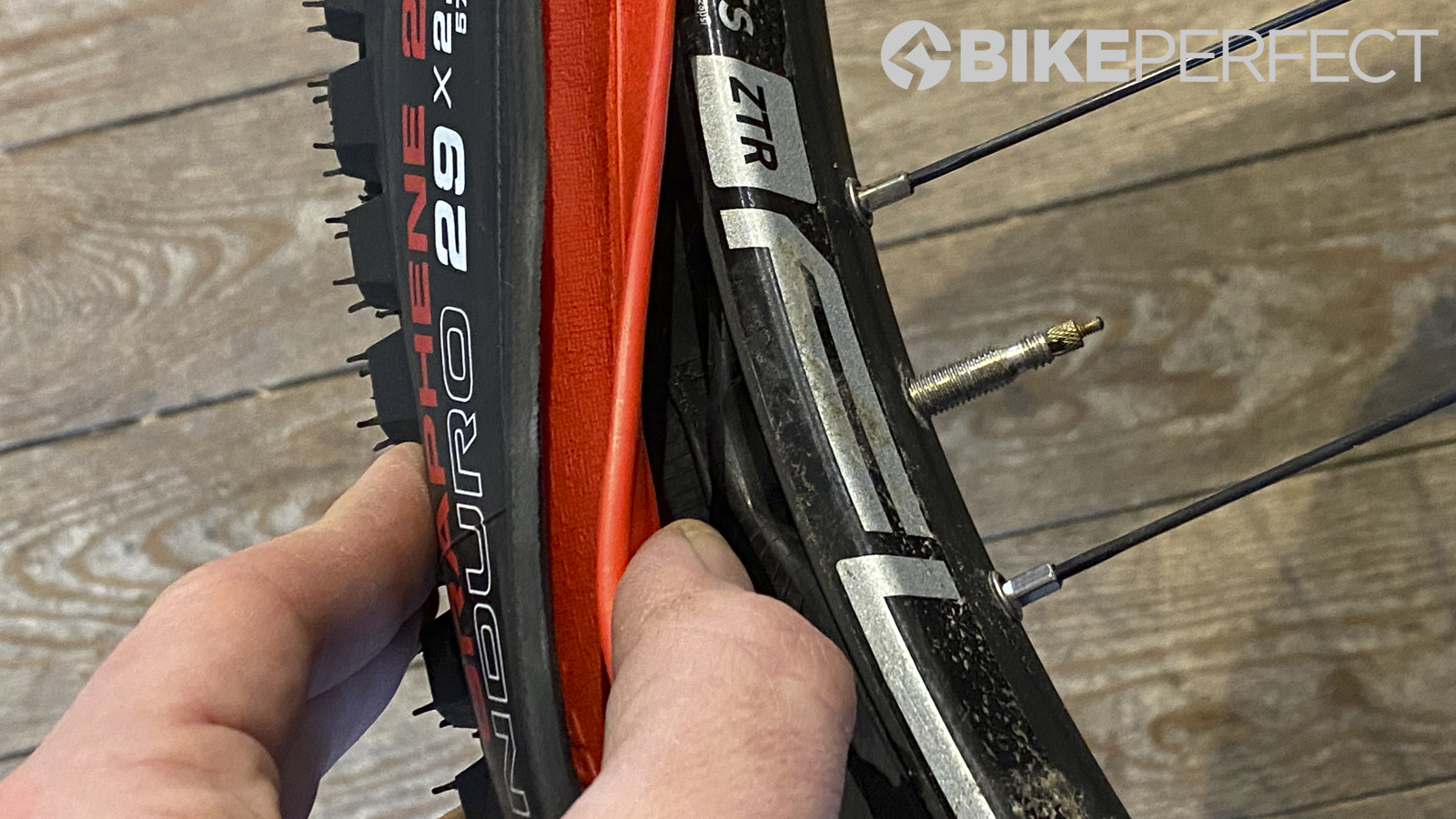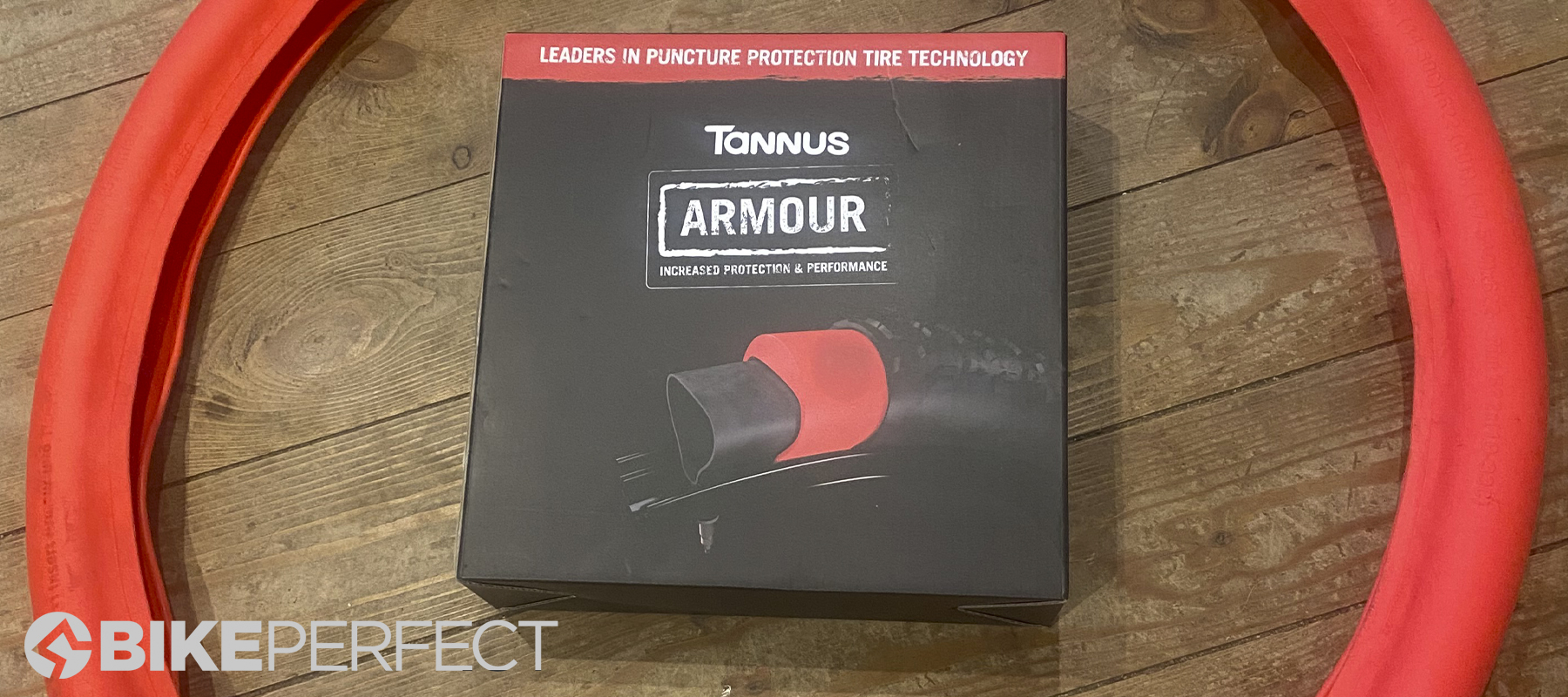Bike Perfect Verdict
Can be a fight to fit but an innovative, fit-and-forget answer for rim and tyre killers
Pros
- +
Fit-and-forget puncture security
- +
No tubeless sealant mess
Cons
- -
Heavier than a standard tubeless system
- -
Difficult to fit depending on the tyre/rim combination
Why trust BikePerfect
Tannus does a range of solid-state ‘Aither’ tyres but it also produces a puncture proofing and rim-protection solution for conventional tyres. However, rather than the conventional ‘pool noodle’ for putting inside a tubeless tyre and sealant system its ‘tyre armour’ is designed for using with a conventional inner tube.
Construction and installation
The insert uses the same multi-cell, lightly springy ‘Aither’ foam as its tyres. It uses a teardrop section so it’s thickest under the crown and shoulders of the tyre and then tapers off down the sides. The centre is hollow to accommodate a conventional inner tube. It weighs just over 300g in the 29-inch size and comes in every major diameter. Widths are limited to 2-2.5in in most, with cut lines around the skirt for the smaller sizes. Wider tyre versions are on the way though.
According to Tannus you can fit the system in less than a minute, but how far that is from the truth varies depending on the rims and tyres you’re using. We started with a 2.4in Bontrager tyre on Bontrager 30mm rims and even with all the tricks we’ve learned from installing thousands of tyres over the years, seriously strong thumbs and the toughest tyre levers, we couldn’t even get close to getting the insert into the tyres. Bontrager rims and tyres are notoriously tight though, and things went a lot better with Stan’s and Spank rims and either Vittoria, Maxxis or Schwalbe tyres.
There’s still a bit of wrestling and patience to sneak the insert and innertube into the tyre once it’s on the rim and it definitely works better with a smaller diameter (we used a 700 x 35/40c tube in a 2.5in 29er tyre) inner tube. You’ll definitely struggle more with narrower tyres and narrower rims too, and we made sure we had a brew and some meditation music ready when it came to trying to fit the 700c gravel bike inserts on 24mm internal tyres.
Performance
With a 300g tyre liner plus a 150g inner tube you’re adding a serious amount of weight to your wheel. However, because the liner soaks up a load of impact and because it provides a physical protection layer for the inner tube even if the tyre splits you can run a lighter gauge tyre. That puts you within sight of a similar weight gain to going for a full DH tyre from an enduro tyre or an enduro tyre from a cross-country tyre. In other words, you’re still going to get a slower accelerating, more planted wheel feel that’ll suit gravity rather than anti-gravity oriented riders, but it’s not a total responsiveness killer.
Working out what pressure to run in the tube takes some time and, again the stiffer the host tyre the more you need to drop inner tube pressures. We dropped down to around 10psi before a DH tyre felt smooth, whereas lighter tyres needed around 15psi to press everything together to work as a system rather than slightly rattly separates. Once we found the sweet spot though we were surprised how ‘normal’ the system felt, certainly in terms of sensitivity when it came to traction and roll over on small stutter bumps. There’s still definitely a borderline bruising ‘damped’ feel when you hit something flat at speed and that’s unsurprisingly more obvious on a suspension fork that clunks and clatters anyway so arm pump is more of an issue when compared to a conventional tyre system. The liner will also compress over time and while protection doesn’t suffer it does need a bit more pressure to fill things out.
Like most things, you’ll get used to it though and the great thing is the sense of invincibility that comes with the system. Not only can you properly slam into edges without worry like you would with a ‘noodle’ set-up, but there’s also less concern about ripping the tyre open on sharp rocks or other debris. We never got close to unseating or burping the tyre and of course, there’s none of the worries or mess of sealant either. There’s still a chance of a nail or other sharp stab puncture and it’s worth checking regularly for imbedded debris but there’s a lot of foam to fight through before it gets to the tube. Replacing the tube if it does go terminal is generally a lot easier than the initial fit and even when flat it still protects the rim, too.

Verdict
Depending on the tyres and rims, Tannus can be a fight to install, and it certainly works best on wider set-ups. There are no super-wide sizing options yet though. It also adds equivalent weight and sluggishness to going up a gauge of tyre. It also feels slightly more damped and numb than a conventional set-up, though some riders (we’re thinking e-MTB, DH and Park hooligans) may actually prefer that.
You’re totally free from the mess and sealing issues of tubeless though and the sense of fit-and-forget invulnerability is very liberating if you just want to ride as hard as you like without a thought for wheels and tyres. It’s impressively cost-effective compared to a noodle and sealant set-up, especially if you regularly rip tyres beyond a normally repairable state.
Tech Specs
- Price: £29.99
- Weight: (29x2-2.5in) 315g
- Sizes: 29x2-2.5in, 27.5x2-2.5in, 26x2-2.5in, 26x1.6-1.9in, 24x2-2.5in, 20x2-2.5in 700x28/35/42

Guy Kesteven has been working on Bike Perfect since its launch in 2019. He started writing and testing for bike mags in 1996. Since then he’s written several million words about several thousand test bikes and a ridiculous amount of riding gear. He’s also penned a handful of bike-related books and he reviews MTBs over on YouTube.
Current rides: Cervelo ZFS-5, Specialized Chisel, custom Nicolai enduro tandem, Landescape/Swallow custom gravel tandem
Height: 180cm
Weight: 69kg

